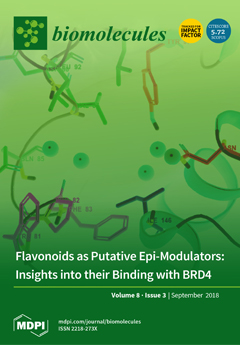Smoking is a major risk factor for cardiovascular diseases and has been implicated in the regulation of the G protein-coupled receptor 15 (GPR15) by affecting CpG methylation. The G protein-coupled receptor 15 is involved in angiogenesis and inflammation. An effect on
GPR15 gene regulation has been shown for the CpG site CpG3.98251294. We aimed to analyze the effect of smoking on
GPR15 expression and methylation sites spanning the
GPR15 locus. DNA methylation of nine
GPR15 CpG sites was measured in leukocytes from 1291 population-based individuals using the EpiTYPER. Monocytic
GPR15 expression was measured by qPCR at baseline and five-years follow up.
GPR15 gene expression was upregulated in smokers (beta (ß) = −2.699,
p-value (
p) = 1.02 × 10
−77) and strongly correlated with smoking exposure (ß = −0.063,
p = 2.95 × 10
−34). Smoking cessation within five years reduced
GPR15 expression about 19% (
p = 9.65 × 10
−5) with decreasing
GPR15 expression over time (ß = 0.031,
p = 3.81 × 10
−6). Additionally, three novel CpG sites within
GPR15 affected by smoking were identified. For CpG3.98251047, DNA methylation increased steadily after smoking cessation (ß = 0.123,
p = 1.67 × 10
−3) and strongly correlated with changes in
GPR15 expression (ß = 0.036,
p = 4.86 × 10
−5). Three novel
GPR15 CpG sites were identified in relation to smoking and
GPR15 expression. Our results provide novel insights in the regulation of GPR15, which possibly linked smoking to inflammation and disease progression.
Full article






